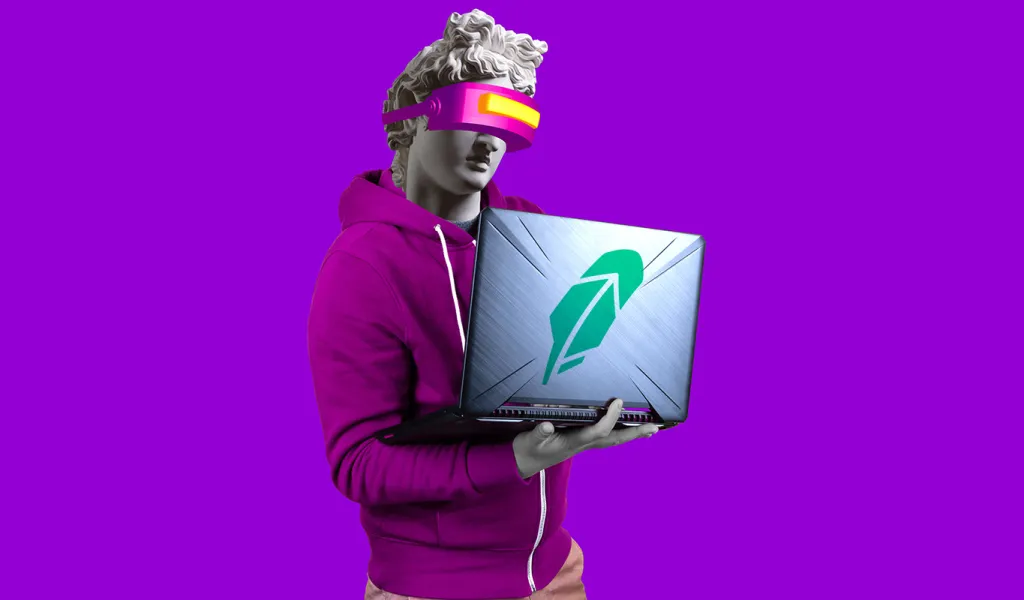 According to statistics, decentralized exchange (dex) monthly trading volumes have dropped significantly since Jan. 2022. After a brief spike in volume in Nov. 2022, dex trade volumes have been lackluster for the past 44 days. As of Jan. 14, 2023, Uniswap version three (V3) has the highest trade volume during the past 24 hours at […]
According to statistics, decentralized exchange (dex) monthly trading volumes have dropped significantly since Jan. 2022. After a brief spike in volume in Nov. 2022, dex trade volumes have been lackluster for the past 44 days. As of Jan. 14, 2023, Uniswap version three (V3) has the highest trade volume during the past 24 hours at […]
Layer 1 EVM blockchain Flare goes online, aimed at providing developers a platform to build decentralized interoperability applications.
Flare, a new layer-1 Ethereum Virtual Machine blockchain platform, has gone live with the launch of two core protocols aimed at powering decentralized interoperability applications.
The platform serves as an oracle network that allows developers to build applications that are aimed at being interoperable with different blockchains and internet platforms and services.
Flare features two protocols that power its application-building suite. Its State Connector protocol enables information and data to be used securely and at scale from various blockchains and internet sources with the use of smart contracts. The functionality is touted to offer powerful data to the network and facilitate the development of cross-chain solutions.
Meanwhile, the Flare Time Series Oracle (FTSO) sources and provides decentralized price and data feeds to decentralized applications (DApps) running on the layer-1 blockchain platform. According to Flare’s technical documentation, the FTSO smart contract provides continuous estimates for different types of data.
Independent providers retrieve data from external sources like centralized and decentralized exchanges and supply that data to the FTSO system. The information is weighted according to each provider's voting power, and a median is calculated to produce the final estimate.
Related: Chainlink launches staking to increase the security of oracle services
This operates as an incentive system for data providers, which are rewarded for supplying price pairs and other information that are close to the median value from various sources.
The protocol’s two networks, Songbird and Flare, run Ethereum Virtual Machine which allows Ethereum contracts and tools to be used in the development of smart contracts and applications. However these layer 1 networks run independently of the Ethereum mainnet.
Details of the platform launch shared with Cointelegraph highlight the importance of providing secure access to data. Flare CEO & co-founder Hugo Philion believes the two protocols can lead to new use cases for blockchain technology, such as triggering a Flare smart contract with a payment made on another chain or by input from a conventional website.
“It also facilitates a new way of bridging, specifically to bring non-smart contract tokens to Flare for use in applications like DeFi protocols.”
Flare initiated its token airdrop on Jan. 9, with 4.27 billion FLR tokens distributed to millions of users across various cryptocurrency exchanges. The airdrop itself marked a unique milestone, as developers can now start using Flare’s EVM and data acquisition protocols.
The initial token distribution released 15 percent of the full public token allocation, with the remainder set to be released monthly over 36 months. The allocation method for the remaining token supply will be settled by a community vote through the Flare Improvement Proposal 01 (FIP.01).
 JPMorgan has outlined key changes it expects in the crypto industry and its regulation following the collapse of crypto exchange FTX. The global investment bank envisages several new regulatory initiatives, including those focusing on custody, customer asset protection, and transparency. JPMorgan Expects Major Changes in Crypto Industry Post FTX Meltdown Global investment bank JPMorgan published […]
JPMorgan has outlined key changes it expects in the crypto industry and its regulation following the collapse of crypto exchange FTX. The global investment bank envisages several new regulatory initiatives, including those focusing on custody, customer asset protection, and transparency. JPMorgan Expects Major Changes in Crypto Industry Post FTX Meltdown Global investment bank JPMorgan published […] Nestcoin, a Nigerian Web3 startup which got an investment from Alameda Research in 2021, revealed on Nov. 14 that it had “a significant proportion of stablecoin investment” stuck at FTX. According to the startup’s CEO, laying off some employees allows the company to focus on building a more decentralized crypto future. Using FTX as Custodian […]
Nestcoin, a Nigerian Web3 startup which got an investment from Alameda Research in 2021, revealed on Nov. 14 that it had “a significant proportion of stablecoin investment” stuck at FTX. According to the startup’s CEO, laying off some employees allows the company to focus on building a more decentralized crypto future. Using FTX as Custodian […] Golden, a startup that seeks to build a decentralized data hub, has raised $40 million dollars in a Series B funding round. The round, which was led by a16z crypto, will allow the company to keep building its concept, which revolves around combining data submission and validation with Web3-based token incentives. Golden Raises $40 Million […]
Golden, a startup that seeks to build a decentralized data hub, has raised $40 million dollars in a Series B funding round. The round, which was led by a16z crypto, will allow the company to keep building its concept, which revolves around combining data submission and validation with Web3-based token incentives. Golden Raises $40 Million […] According to a recently published report, the decentralized exchange (dex) Uniswap has blocked roughly 253 cryptocurrency addresses allegedly tied to crimes or government sanctions. The information was discovered by the software developer Banteg who analyzed and saved the shared logs from Uniswap’s server. 30 out of the 253 Blocked Addresses Are ENS Domain Names, Uniswap […]
According to a recently published report, the decentralized exchange (dex) Uniswap has blocked roughly 253 cryptocurrency addresses allegedly tied to crimes or government sanctions. The information was discovered by the software developer Banteg who analyzed and saved the shared logs from Uniswap’s server. 30 out of the 253 Blocked Addresses Are ENS Domain Names, Uniswap […]
EOS attempts to become a fully decentralized network following a key "hard fork" in September.
EOS rose approximately 20% to reach $1.66 on Aug. 17 and was on track to log its best daily performance since May 2021.
Initially, the EOS rally came in the wake of its positive correlation with top-ranking cryptocurrencies like Bitcoin (BTC) and Ethereum (ETH), which gained over 2% and 3.75%, respectively. But the upside move was also driven by a flurry of uplifting updates emerging from the EOS ecosystem.

On Aug. 14, the EOS Network Foundation (ENF), a not-for-profit organization that oversees the growth and development of the EOS blockchain, opened registrations for its upcoming "Yield+" incentive program.
The Yield+ is a liquidity incentive and reward program to attract DeFi applications that generate returns for their users. In doing so, the service attempts to compete with its top blockchain rivals in the DeFi space, namely Ethereum, Cardano (ADA), and Solana (SOL).
Since the beginning of Yield+ registration, the total value locked (TVL) inside the EOS pools has increased from 94.71 EOS to 102.18 EOS, showing a temporary spike in demand for the tokens. The TVL will likely increase in the days leading up to the reward activation on Aug. 28.
The Yield+ Launch Is Imminent!
— EOS Network Foundation (@EosNFoundation) August 10, 2022
Designed to build economic activity on $EOS through incentivizing DeFi dApps that increase TVL and generate yield.
August 14th — Registration opens
August 28th — Rewards for TVL begin
Get all the details here:
➡️ https://t.co/fFOZCOEG4y ⬅️ https://t.co/b6q4Xmlay7 pic.twitter.com/ePZPkEiu4I
In addition, EOS will rebrand to EOSIO later this week, followed by a v3.1 consensus upgrade called Mandel in September, according to Yves La Rose, the CEO of ENF.
The rebranding and upgrade serve as EOS's symbolic divorce from Block.One, the company that originally designed the network, nine months after the EOS community elected to stop the issuance of 67 million EOS (~$108 million) to it on malpractice concerns.
La Rose noted that the upgrade would occur via a hard fork, meaning that the new version (EOSIO) will not be backwards compatible with the original chain and will follow new consensus rules.
Rebranding EOSIO and hardforking #EOS is a necessary part of the comeback, and represents the start of a new chapter: #TheNewEOS
— Yves La Rose (@BigBeardSamurai) August 15, 2022
Under the leadership of the @EOSNFoundation, $EOS can finally break through its glass ceiling and reach its full potential!
A hard fork also means that in the event of a possible chain split, all the existing EOS holders will receive an equal amount of tokens on both chains. In theory, that could increase EOS demand among speculators in the days leading up to the hard fork as witnessed in the case of Ethereum.
From a technical perspective, EOS's price eyes an extended bull trend in the coming weeks
The first major hint comes from a cup-and-handle formation on the EOS daily chart, confirmed by a U-shaped price trajectory followed by a downward channel trend. As a rule of technical analysis, a cup-and-handle breakout should send the price higher by as much as the pattern's maximum height.

As a result, EOS's upside target comes to be near $2.45, up almost 50% from today's price
Related: Is Ethereum really the best blockchain to form a DAO?
Nevertheless, as a note of caution, the breakout risks losing its momentum near EOS's 200-day exponential moving average (200-day EMA; the blue wave) at $1.79. Such a pullback could have EOS test the 50-day EMA (the red wave) at $1.21 as its next downside target, almost 25% below the current price.
The views and opinions expressed here are solely those of the author and do not necessarily reflect the views of Cointelegraph.com. Every investment and trading move involves risk, you should conduct your own research when making a decision.

The chief executive of the world’s largest crypto exchange by trading volume predicts that decentralized finance (DeFi) and decentralized exchange platforms (DEXes) will outshine their centralized counterparts in the long term. In a new interview on the Bankless YouTube channel, Binance CEO Changpeng Zhao predicts that in 10 years, decentralized blockchain projects will tower above […]
The post Binance CEO Changpeng Zhao Makes 10-Year Prediction for Decentralized Finance (DeFi) appeared first on The Daily Hodl.

Retail trading platform Robinhood is launching a new non-custodial crypto and non-fungible token (NFT) wallet in the company’s latest push to embrace the digital asset space. According to a new press release, the trading titan has started developing a multichain Web 3.0 wallet that will allow investors to have total control of their digital assets […]
The post Robinhood to Compete Against Coinbase With Launch of New Crypto and NFT Wallet appeared first on The Daily Hodl.

Centralized communication platforms prove to be an easily identifiable weakness in activist movements.
The Russian government has cracked down on foreign social media platforms such as Instagram, Facebook and Twitter, banning them for extremist activists. For protestors, activists and local civilians, these actions have resulted in a significant barrier to communication with the outside world. Furthermore, they have also raised the question of just how easy of a target these apps are for state authorities. With citizens unable to access these platforms, they have little choice but to flee to the next-best still active platforms.
However, it isn't just Russian activists who have taken to alternatives. Consider, for example, Telegram, a cloud-based instant messaging service that has quickly become a place for sharing war footage and other content that may have otherwise been blocked on platforms like Instagram or Twitter. Not to mention that even these platforms, which are available to citizens now, have no guarantee of being free from bans by authorities. In this event, users will have no choice but to turn to "homemade" alternatives developed locally.
The debate between freedom and control is not a new one, with current world conditions only being one example of when these dichotomies exist head to head. Previously, this debate was introduced with the internet's provision of digital freedom, being taken away with big tech using metadata for profit-making opportunities and concerns around governments using the same data to keep an eye on their citizens. The result is that privacy and freedom of speech will never be guaranteed under today’s Web 2 foundation.
The battle between freedom and control is still ongoing as the world sneaks out new methods to empower individual sovereignty. For this reason, movements will always have an easily targetable weakness, and protest activities will still face barriers as long as they rely on centralized social media platforms, which may be shut down at any point. Naturally, this calls to, for example, the situation that occurred when the Nigerian government banned Twitter to protect their people from anti-government political activity. Effectively, this action only stifled activities and restricted citizens' ability to communicate and organize freely.
As a result, social movements are now straying away from having a single leader, taking power from one person and dispersing power among the people who make up the movement. Evidence of this decentralized approach is now seen in movements like the Extinction Rebellion and Occupy Wall Street.
This concept of giving power back to the people is far from new. With the introduction of the internet and mobile devices, power is put directly into the hands of the user. After all, anyone can record, create or disperse information to millions of people in seconds. Power is effectively disseminated to the world, enabling even the citizen with the smallest voice to make the biggest impact. Therefore, rather than being "leaderless," movements toward a decentralized structure are empowering new leaders in a way that enables anyone to rally people together and take action around the most pressing concerns in their community.
While the internet has proven to be the greatest information spreader, its technological design isn't perfect. Therefore, while technology will always be core to how activists operate and engage with the rest of the world, proper protocols and infrastructure are required to ensure efforts aren't being stifled.
Therefore, platforms for decentralized communication have proven to be the most suitable option for activists and protestors to come together without fear of system shutdowns. Unfortunately, to make these offerings available, private messengers require a powerful decentralized ecosystem as their foundation.
In the decentralization of communication, blockchain technology is looked to as playing a critical role as a starting point for messaging applications. These solutions effectively go above and beyond encryption to add another level of privacy. Set up correctly, this technology can become the shield for protecting the innocent and encourage efforts that support the greater good.
One example of that is Oxen, a platform designed to build a private future for the internet by providing tools and services that enable users to leverage blockchain networks to achieve privacy across all areas of their day-to-day lives.
To support this, Oxen released Session. Session is a messaging app tailored for activists, protestors and others in high-risk situations. Due to their decentralized nature, these platforms make it more difficult for malicious governments or authorities to block, censor or surveil the content being exchanged.
In response to these efforts, Kee Jefferys, the chief technology officer at Oxen, shares, "Session is purpose-built for activists. It's a great messenger option for protestors and activities because it is secure, private, anonymous and decentralized. When you use Session, you can be sure that you can speak freely."
With Session, activists will have the ability to complete their work peacefully and without interruption. Session has already hit the 1,000,000 download milestone on Google Play, with over 300,000 monthly active users.
Disclaimer. Cointelegraph does not endorse any content or product on this page. While we aim at providing you with all important information that we could obtain, readers should do their own research before taking any actions related to the company and carry full responsibility for their decisions, nor can this article be considered as investment advice.